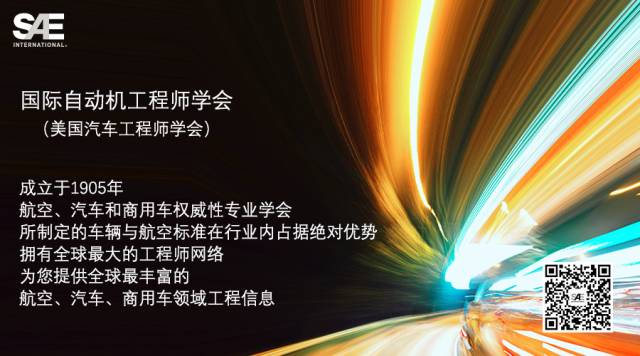 路灯上的DSRC系统可提供大量信息,协助车辆导航。
路灯上的DSRC系统可提供大量信息,协助车辆导航。
现阶段,尽管美国交通公路安全局(NTHSA)尚未强制要求部署V2I(汽车-基础设施)通信系统,但支持者坚持认为该技术将成为自动驾驶汽车成为现实的必要条件之一,并因此大力推动V2I技术的应用。随着该技术的不断成熟,路边基础设施的建设费用问题也开始凸显。
在今年4月4日开幕的WCX17 - SAE 2017 全球汽车年会上,来自联邦和州政府机构的专家组成员分享了各自对V2I部署的看法、探讨了目前存在的一些挑战,并介绍了密歇根州、纽约市、怀俄明州的V2I公路测试项目进展。通过一系列测试,专用短程通信技术(DSRC)的稳健性和可行性都得到了验证,专家组成员也普遍认为V2I技术将显著提高道路安全性,并改善交通拥堵情况。
路边发射装置等V2I道路设施可以发挥辅助通讯功能,对车辆的传感器系统进行补充,因此有望成为完整自动汽车系统的必要组成要素。然而,尽管专家组成员均乐观地认为,NHTSA将强制要求车辆及路灯等道路设施必须配备DSRC通信功能,但相关费用可能会成为一个问题。在此背景之下,邀请私营机构加入,可能是一个可行的解决方案。
“我们没办法突然‘变’出一大堆钱,来支持V2I系统的部署,”密歇根州交通运输部的Matthew Smith表示,“即使有了网联汽车,我们还是该建桥要建桥,该立桩要立桩,原本的道路开支一点也不会缩小。因此,我们必须求助于私营机构,看看能否利用收集的数据,帮助节约一部分成本。”
从另一方面来说,即使联邦和州政府愿意掏钱负责完成V2I系统的初始安装,那后期的软件升级等维护成本也是公共服务规划者需要考虑的地方。大多数专家组成员认为,为了保证系统的长期安全并控制运维成本,保证“空中升级”至关重要。
“系统安装维护最大的成本在于人工,”纽约市交通运输部的Mohamad Talas表示,“在这种背景下,空中软件升级就显示出了极大的优势。此外,系统的硬件设计也必须保证易于更换与维护。”
有在场的与会人员提问道,即将出现的5G移动通信是否有机会替代DSRC系统?专家组成员回答说,多年以来,V2I系统的开发人员一直在努力确保全美各州,甚至还有几个美国以外的国家能够采用同类的通信技术。而目前来看,5G供应商甚至还不能提供一个坚实的技术基础。
“测试证明,DSRC技术可以保证车辆的无延迟通信,而且现在立刻就可以投入使用。”犹他州交通运输部的Blaine Leonard表示,“5G网络要想真正崭露头角,可能还需要6到7年时间。此外,DSRC是免费的,那5G供应商也愿意提供免费的5G网络吗?”
专家组成员还指出,如果联邦和州政府能够真正看到V2I系统的优势所在,他们可能会更愿意为这种系统提供经费支持。联邦公路管理局的Carl Andersen最后表示,民众必须决定,是否值得以每人一杯卡布奇诺的钱,获得每年让30,000人避免死于交通事故的结果,并同时改善交通拥堵情况,同时节省每年用于事故维修的数百万美元。如果答案是肯定的,那大家就应该定期联系议员,为V2I系统争取资金支持。
The National Traffic & Highway Safety Administration hasn’t yet mandated vehicle to infrastructure communications (V2I), but proponents are pressing forward in a technology that they contend will become a mainstay for autonomous vehicles. As the technology matures, paying for a roadside infrastructure is becoming a key issue.
Tuesday at SAE's WCX17, panelists from federal and state agencies provided their perspectives on V2I Deployment, discussing challenges and describing some of the on-highway tests in Michigan, New York City and Wyoming. Those programs have proven the robustness and viability of the technology, prompting panelists to predict that dedicated short range communications between vehicles and roadside infrastructure stations can bring major safety improvements and reduce congestion.
V2I is expected to be a necessity for autonomous vehicles, since roadside beacons can provide information that augments data supplied by on-vehicle sensors. While expressing optimism that NHTSA will mandate DSRC’s inclusion on vehicles and roadside towers, they are concerned that funding may be an issue. Tapping the private sector may be a solution.
“There’s no magical pile of money to fund V2I,” said Matthew Smith of the Michigan Dept. of Transportation. “Connected vehicles do not reduce the need for bridges or the need to fill potholes. We do have to turn to the private sector to see if we can leverage our data collection to offset some costs.”
While state and federal funds may help with initial installations, public service planners are also considering long term factors like updating software. Most panelists said over the air updating will be critical to provide ongoing security and cap costs.
“The most costly factor for installing and maintaining technology is labor,” said Mohamad Talas, NYC DOT Traffic Operation. “Software over the air updating will be a major benefit. Hardware also needs to be easy to replace and maintain.”
Attendees at the crowded session asked whether pending 5G cellular connections might displace DSRC. Panelists replied that V2I developers have worked for years to ensure that all U.S states and a number of foreign countries use similar technologies that have been tested in field trials. 5G suppliers do not even have a firm technology base at present.
“DSRC is available today, tests have proven that moving cars can communicate without latency issues,” said Blaine Leonard, Utah Department of Transportation. “We’re six to seven years from 5G having any impact. Additionally, DSRC is free. Will 5G providers broadcast roadside data for free?”
Panelists noted that if legislators at the state and federal levels understand the benefits of V2I, they will be more inclined to support funding for it. Carl Andersen of the Federal Highway Administration closed the afternoon by noting that constituents need to determine whether it’s worth the cost of a cappuccino to eliminate some of the 30,000 vehicles fatalities every year, reduce congestion and curtail the millions spent on collision repairs. If so, they should be contacting representatives regularly to encourage support.
Author: Terry Costlow
Source: SAE Automotive Engineering Magazine
等级
打分
- 2分
- 4分
- 6分
- 8分
- 10分
平均分
- 作者:Terry Costlow
- 行业:汽车
- 主题:零部件安全性人体工程学/人因工程学电气电子与航空电子
